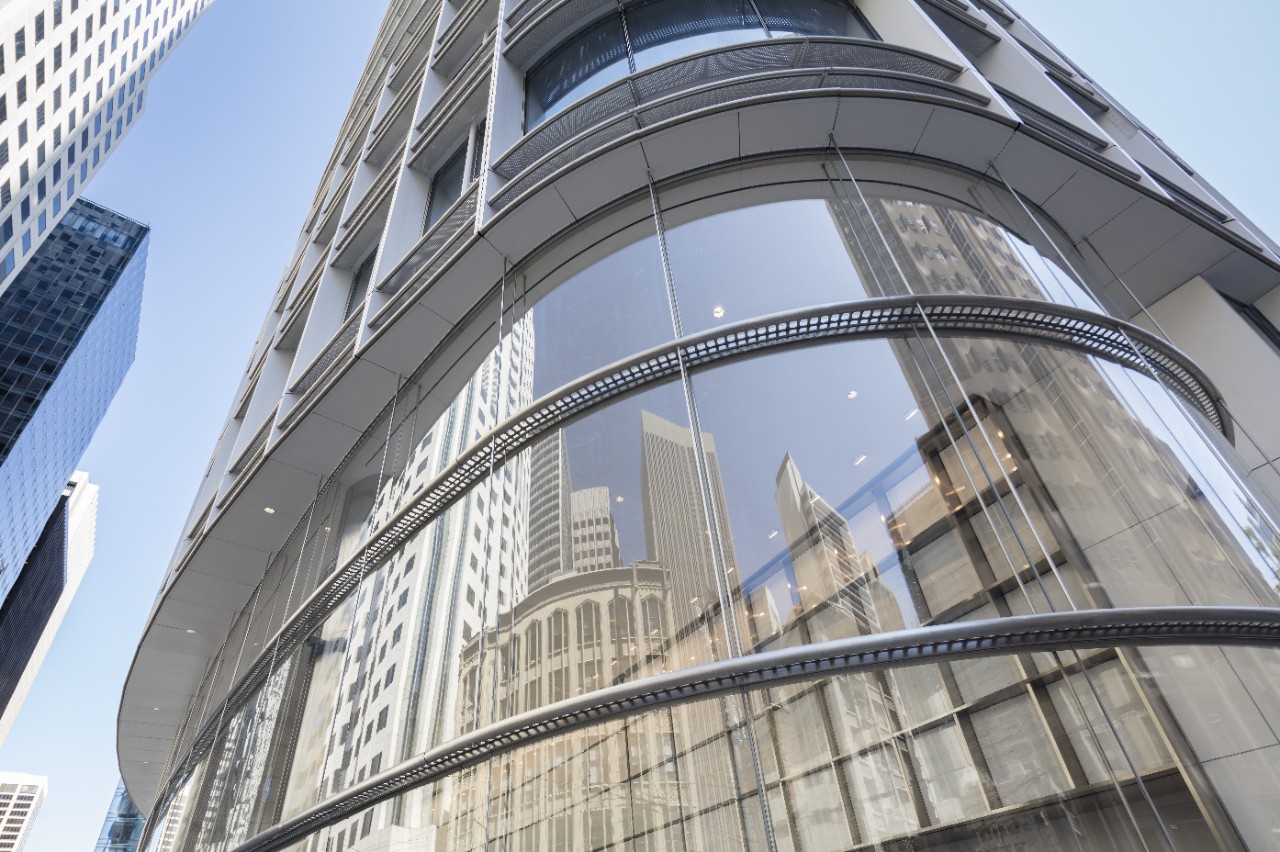Energy efficient glass

Put it to work: performance glass and energy efficient glass
Glass can greatly influence energy use, light transmission, acoustics and facade strength. By understanding and applying each of these components, you can select the right glass for your project.
Glass Performance
Glass contributes to a building’s energy performance by affecting both natural light transmission and solar control. Performance glass is measured by the following:
U-value
The glazing parameter that characterizes the heat transfer through the central part of the glazing, i.e. without edge effects, and expresses the steady-state density of heat transfer rate per temperature difference between the environmental temperatures on each side. Temperature differential according to standard conditions: delta T=15K°. The lower the value, the greater is the insulating value.

Solar factor
Describes total solar energy admitted through glazing. A lower number = less solar energy passing through the glazing into the interior.

Light transmission
Measures the percentage of visible light (in the wavelength range of 380 nm to 780 nm) that passes through glazing. A higher number = more natural light in interior spaces.

Selectivity
The selectivity is the light transmission divided by the solar factor. A higher number = brighter spaces relative to solar control performance.

What are the criteria for measuring the energy performance of glass?
Glass can greatly influence energy use, light transmission, acoustics and facade strength. By understanding and applying each of these components, you can select the right glass for your project.
Glass contributes to a building’s energy performance by affecting both natural light transmission and solar control. Performance glass is measured by the following:
Building Energy Efficiency
Glass can impact light transmission and solar heat to improve the comfort of occupants and help the HVAC system operate at maximum efficiency.
High-performance glass with a high LSG can enable buildings in warmer climates to enjoy the benefits of natural light without intense interior temperatures, or the need to block the light with shades. Meanwhile, buildings in cooler climates can benefit from passive heating offered by glazing with a high SHGC.
Glass coatings with a lower U-Value have higher insulating properties, helping to keep the interior temperature consistent regardless of the outside climate.
A wide variety of architectural glazing products are available to facilitate harmony between aesthetics and energy efficiency.
Acoustics
We are surrounded by sound. Unfortunately, what many might consider pleasant, such as birds singing or laughter, is unfortunately frequently drowned out by less welcome noise. According to the World Health Organization, excessive noise seriously harms us. It can disturb sleep, cause cardiovascular and psychophysiological effects and reduce performance.

Sound is transmitted through glass
The molecules compress against each other and spread that compression as a wave. Noise can be reflected or absorbed by glass to varying degrees, depending on the combination of glass thickness and interlayers.

Strength
Performance glass can provide strength while still offering transparency and beauty. This video illustrates the strength variations of different kinds of glass.
All architectural glass, in its original state, is annealed. Yet further load resistance is attainable by applying heat treatment. This involves carefully heating the glass, and then rapidly cooling its surfaces to induce permanent compression. It’s important to note that the glass must be cut and fabricated before the process. There are two kinds of heat-treated glass:
- Tempered glass is approximately 4 x stronger than annealed (standard) glass. When broken, it is designed to break into small pieces with comparatively dull edges. Tempered glass can correspondingly qualify as safety glazing.
- Heat-strengthened glass is approximately 2 x stronger than annealed glass. When broken, its shards are more conductive to retention within the glazing panel frame than are those of fully tempered glass.
-

SunGuard® eXtraSelective
SunGuard® eXtraSelective is our latest commercial range of triple silver solar control glass with world-class selectivity, which means it delivers an optimum ratio of natural light transmission to solar energy control.
See more -

SunGuard® SuperNeutral
SunGuard® SuperNeutral™ is our commercial range of double silver coated glass, ideal for those seeking high-performance with a highly neutral aesthetic. Its superb natural light transmission, solar protection and thermal insulation make it ideal for a wide range of applications.
See more -

SunGuard® High Performance
SunGuard® High Performance glass not only offers high solar control but also design flexibility and good levels of thermal insulation. Request products sample!
See more





